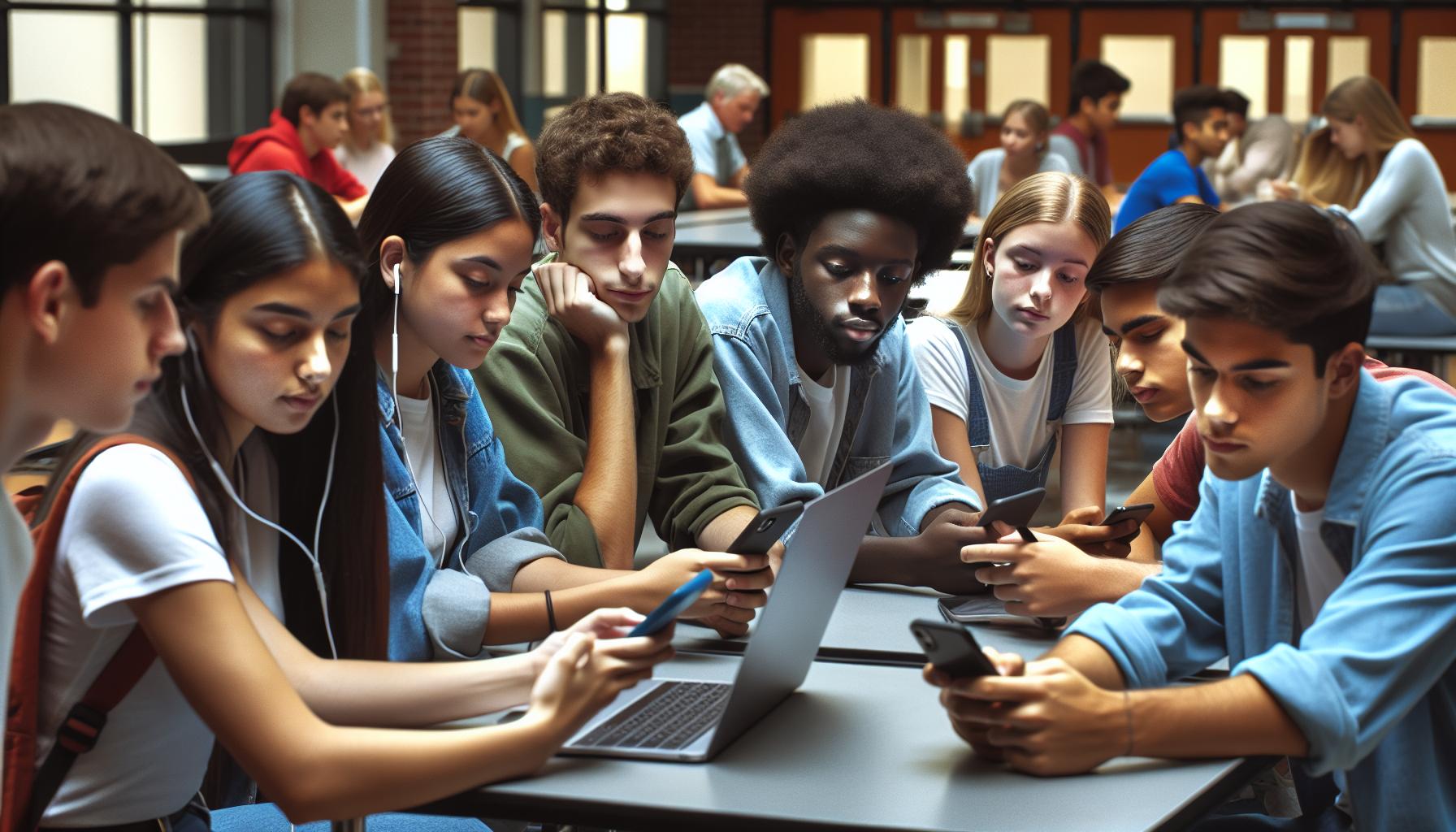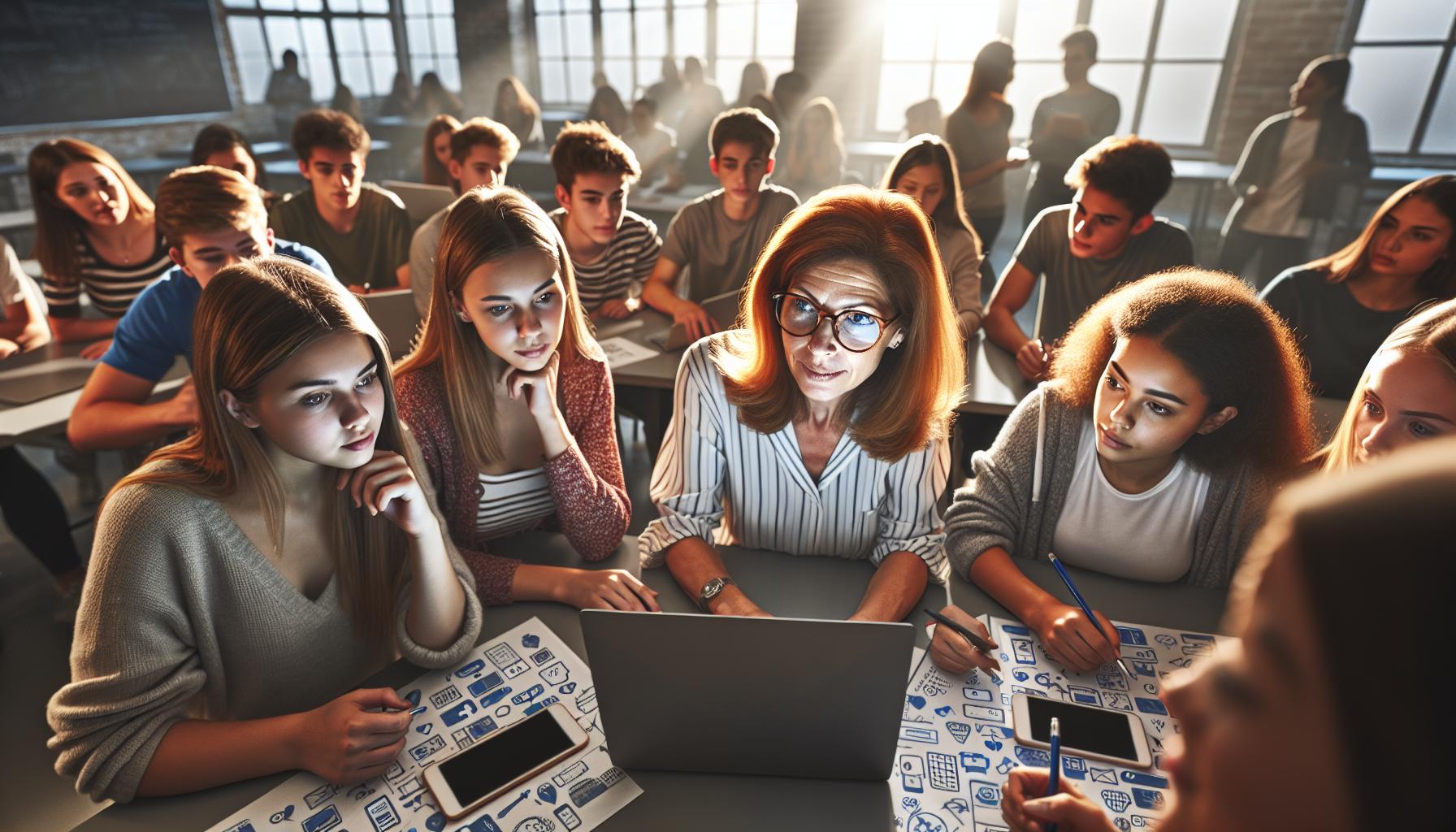Key Takeaways
- Understanding Key Risks: High school students face significant dangers on social media platforms, including cyberbullying, privacy breaches, and interactions with strangers.
- Implement Privacy Settings: Students should customize their privacy settings to limit profile visibility, ensuring only friends can access their information.
- Practice Caution Before Posting: It’s crucial for students to think about potential consequences before sharing any content online, as it may be permanent.
- Report Inappropriate Behavior: Encourage students to promptly report any suspicious or harmful actions they encounter on social media platforms.
- Education is Essential: Participating in workshops and courses on digital citizenship can equip students and parents with valuable information on social media safety.
- Promote Critical Thinking: Students should develop skills to evaluate online content critically, enhancing their ability to identify misinformation and dubious sources.
In today’s digital age, social media plays a pivotal role in the lives of high school students. While it offers a platform for connection and self-expression, it also poses significant risks. Navigating these online spaces can be challenging, and understanding how to stay safe is crucial for young users.
With the rise of cyberbullying, privacy concerns, and online predators, students must be equipped with the knowledge and tools to protect themselves. By fostering awareness and promoting responsible online behavior, they can enjoy the benefits of social media while minimizing potential dangers. This article explores essential strategies for ensuring social media safety, empowering high school students to engage confidently in their digital lives.
Social Media Safety For High School Students
Social media safety involves recognizing the risks and making informed choices when interacting online. High school students face challenges, including cyberbullying, privacy breaches, and the potential for contact with online predators. To navigate these challenges effectively, students must develop critical awareness and adaptive strategies.
Key Risks Associated with Social Media
- Cyberbullying: Harassment through digital platforms can lead to severe emotional distress. Statistics show that 15% of high school students reported being bullied online.
- Privacy Issues: Sharing personal information increases vulnerability. It’s essential to avoid posting details like home addresses, phone numbers, and locations.
- Contact with Strangers: Interactions with unknown individuals pose significant threats. Students should recognize that not everyone online has good intentions.
Best Practices for Safe Social Media Use
- Adjust Privacy Settings: Students should customize their privacy settings to limit who can see their profiles and posts. Limit access to friends only for better security.
- Think Before You Post: Students must consider the potential consequences before sharing content. Once shared, information can be challenging to erase.
- Report Suspicious Activity: Encourage students to report any inappropriate or harmful behavior immediately. Most platforms offer reporting features for easy access.
- Educate About Online Etiquette: Understanding respectful communication can prevent misunderstandings. Discuss the long-term impact of online interactions.
- Promote Critical Thinking Skills: Students should question the authenticity of online content. Encourage skepticism towards sensationalized posts or dubious sources.
- Participate in Workshops: Schools can host workshops focused on digital citizenship and safety. These sessions can offer students practical tools and resources.
By understanding social media safety, students can protect themselves and foster a positive online experience. Empowering them with knowledge and practical skills enhances their confidence in navigating digital environments.
Common Risks Associated With Social Media

Social media presents several risks for high school students that can impact their well-being and safety. Recognizing these risks is essential for maintaining a positive online presence.
Cyberbullying
Cyberbullying affects 15% of high school students annually, presenting serious psychological challenges. Aggressors use platforms like Instagram, Snapchat, and Facebook to harass and intimidate peers. Victims often experience anxiety, depression, and isolation, with lasting effects on their self-esteem and academic performance. Monitoring online interactions and encouraging open conversations can help students identify and report bullying behavior promptly.
Privacy Concerns
Sharing personal information on social media poses significant privacy risks. Students often disclose details like their phone numbers, addresses, and location in posts or messages. This oversharing can attract unwanted attention from strangers and lead to potential threats. Educating students on privacy settings and the importance of limiting personal information visibility is crucial. Additionally, students should understand the permanence of digital footprints; once shared, content can remain accessible indefinitely, increasing vulnerability to exploitation.
Best Practices For Social Media Use

High school students can enhance their social media safety by following specific practices. These strategies ensure a more secure online experience while mitigating potential risks.
Setting Privacy Settings
Adjusting privacy settings serves as a critical step for students. Students should set their accounts to “private” to limit visibility to approved friends only. They can also customize who sees their posts and personal information. Regularly reviewing these settings is essential, as platforms frequently update privacy options. Students must resist sharing location data or tagging themselves in specific places to maintain their privacy. Educating students on identifying what each setting entails ensures they take full control of their profiles.
Managing Friend Lists
Managing friend lists helps students maintain a safe online environment. Students should connect only with people they know personally, avoiding requests from unfamiliar users. Regularly reviewing friend lists helps identify and remove anyone who may pose a risk. Understanding the implications of accepting friend requests from strangers is crucial. Students should also consider creating friend groups to share different content with various connections selectively. This approach provides further protection of their personal information from unwanted eyes.
Educational Resources For Students and Parents

Various resources exist to enhance social media safety for high school students and their parents. Workshops, seminars, and online courses provide essential knowledge and strategies for navigating digital platforms securely.
Workshops and Seminars
Workshops and seminars offer hands-on learning experiences that equip students and parents with tools to address social media challenges. These events can focus on topics such as cyberbullying prevention, maintaining privacy settings, and understanding the consequences of online interactions. Schools and community organizations often organize these events, inviting experts to share insights and practical advice. Regular participation can foster a culture of safety and awareness, encouraging open discussions about the risks associated with social media use.
Online Courses
Online courses present a flexible option for students and parents to learn about social media safety at their own pace. Many platforms provide courses covering essential subjects like digital citizenship, online etiquette, and identifying potential online threats. These courses typically include interactive elements, quizzes, and resources to reinforce learning and facilitate practical application. By engaging in online education, families can build a foundation of knowledge that promotes safer digital behavior and enhances critical thinking regarding online content.
Navigating social media safely
Navigating social media safely is crucial for high school students. By understanding the risks and implementing best practices, they can enjoy the benefits of connectivity while minimizing potential dangers. Awareness and education play vital roles in fostering a secure online environment.
Encouraging open discussions about online experiences can empower students to recognize and address issues like cyberbullying and privacy concerns. With the right tools and knowledge, they can build a positive digital presence that enhances their social interactions and personal growth.
Ultimately, promoting a culture of safety and responsibility online not only protects students but also prepares them for a more informed and confident digital future.